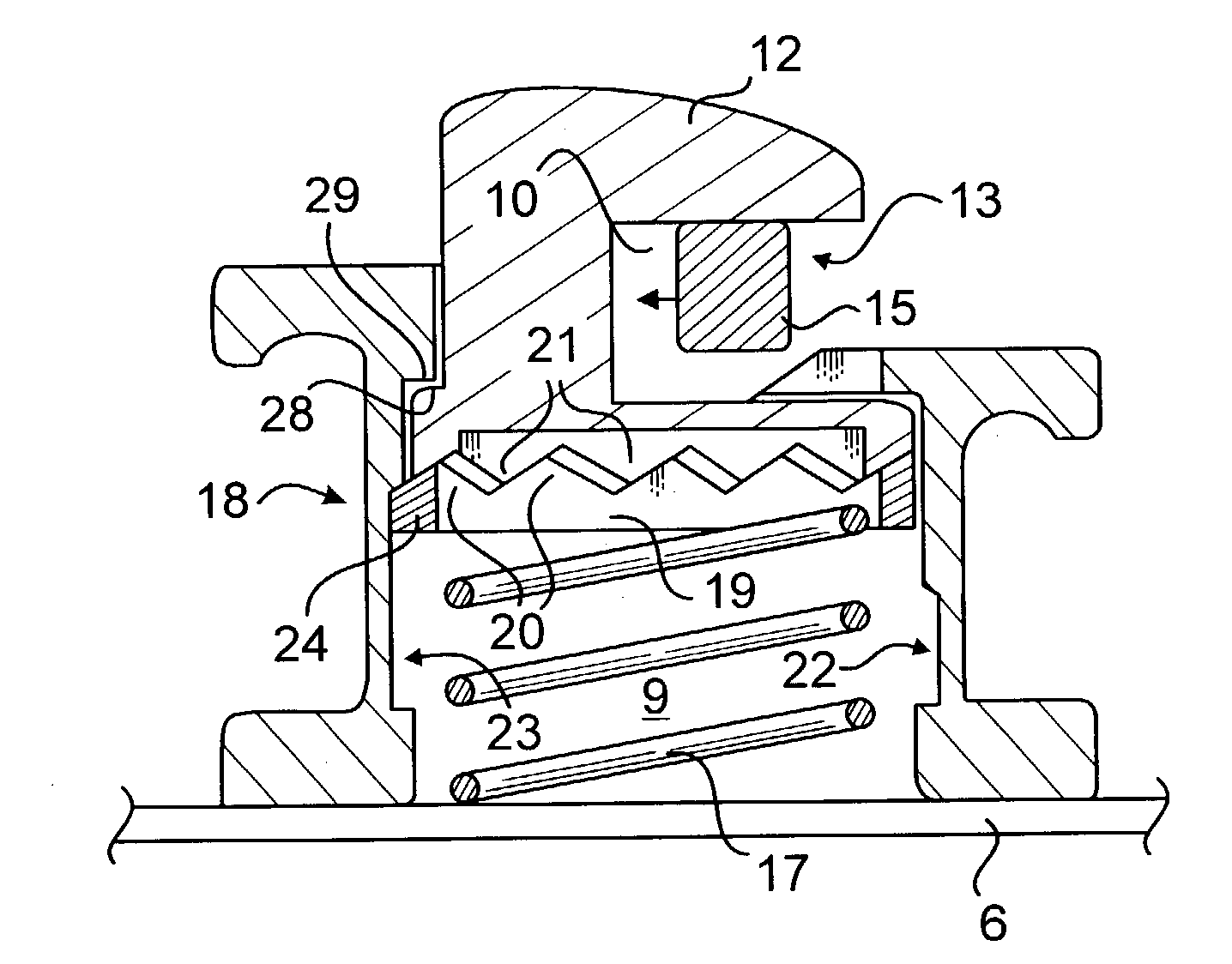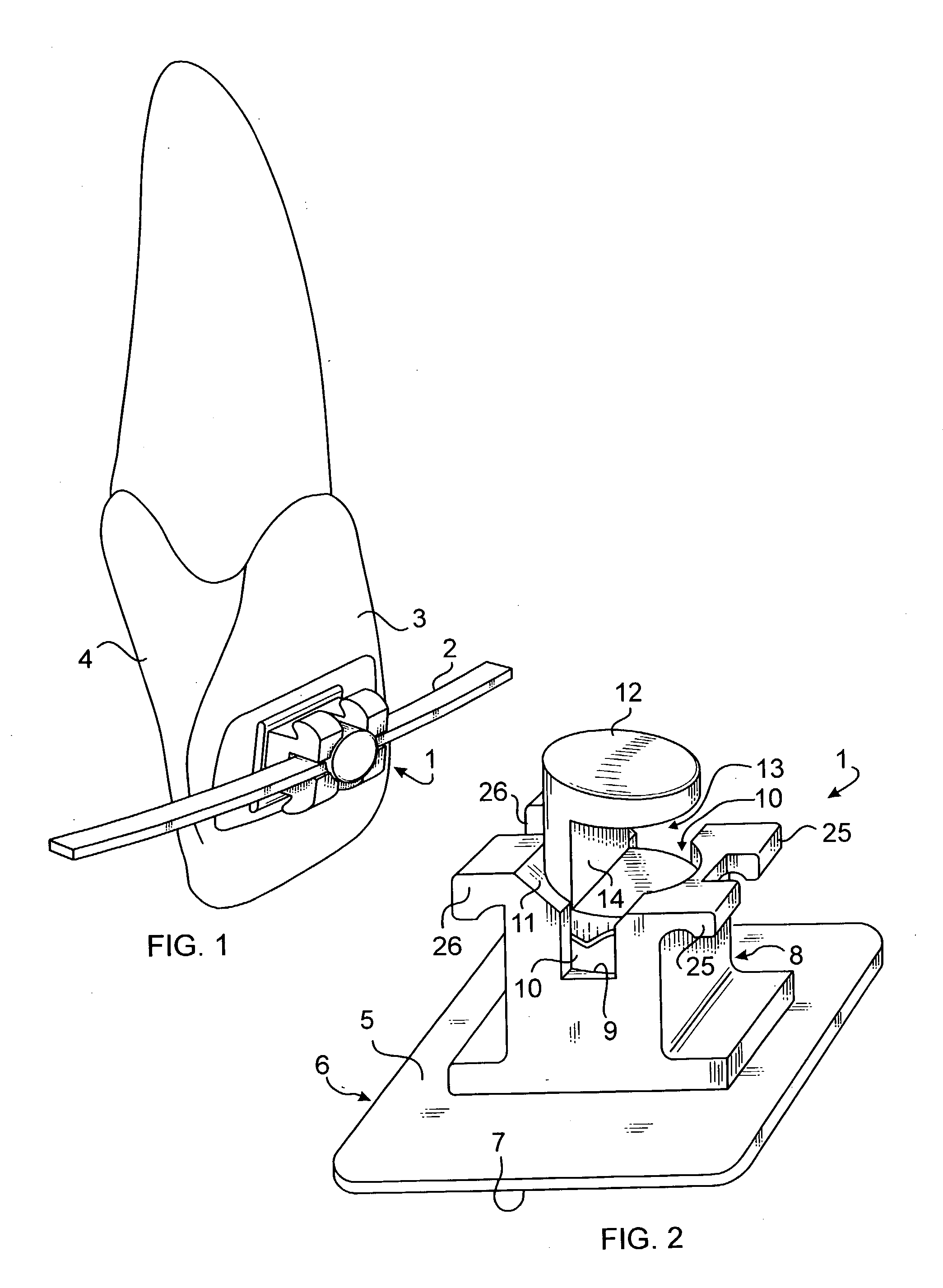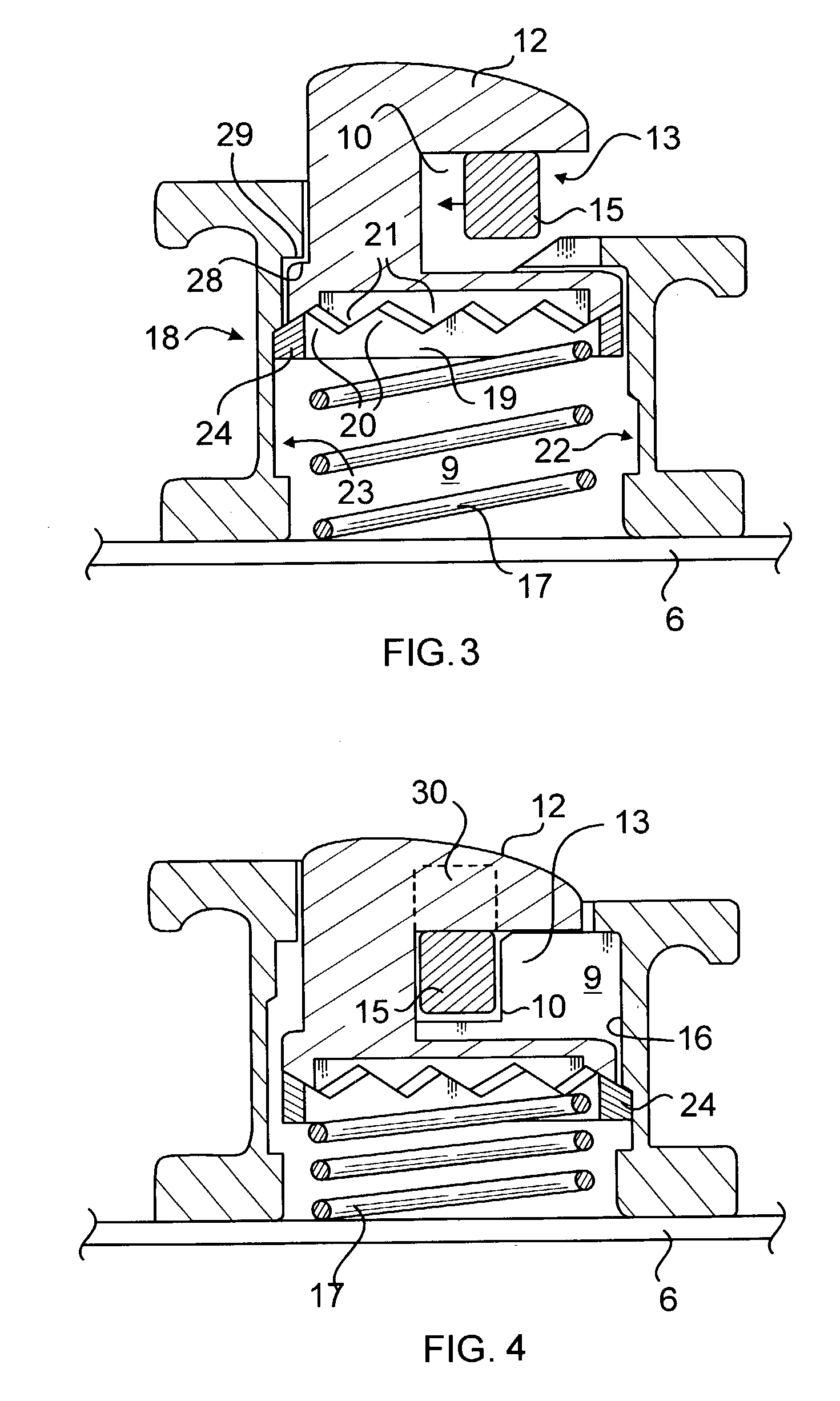Self-engaging orthodontic bracket
a self-engaging, orthodontic technology, applied in the field of orthodontic brackets, can solve the problems of reducing the effectiveness of arch wire correction, affecting the use of orthodontic brackets, and affecting the use of orthodontic brackets, and achieve the effect of convenient us
- Summary
- Abstract
- Description
- Claims
- Application Information
AI Technical Summary
Benefits of technology
Problems solved by technology
Method used
Image
Examples
Embodiment Construction
Referring now to the drawing, there is shown in FIG. 1, a self-engaging orthodontic bracket 1 according to the invention securing a corrective arch wire 2 against the labial surface 3 of a tooth 4.
As shown in FIG. 2, the bracket 1 is mounted on the distal, labial face 5 of a pad-forming base 6 whose proximal, lingual face 7 is shaped and dimensioned to intimately adhere to the labial surface area 3 of the tooth. The bracket comprises a substantially cubical block or body 8 projecting distally, i.e., in a labial direction from the base, and having a side dimension of approximately 3 to 4 millimeters. A cylindrical well 9 is axially bored through the length of the body 8 in an axial direction substantially orthogonal to the labial and lingual faces of the pad.
A rectangular slot 10 is diametrally cut across the rim 11 of the well on the distal side of the body. A cylindrical post or plunger 12 is slidingly and intimately engaged into the well. The post has a lateral notch 13 whose i...
PUM
 Login to View More
Login to View More Abstract
Description
Claims
Application Information
 Login to View More
Login to View More - R&D
- Intellectual Property
- Life Sciences
- Materials
- Tech Scout
- Unparalleled Data Quality
- Higher Quality Content
- 60% Fewer Hallucinations
Browse by: Latest US Patents, China's latest patents, Technical Efficacy Thesaurus, Application Domain, Technology Topic, Popular Technical Reports.
© 2025 PatSnap. All rights reserved.Legal|Privacy policy|Modern Slavery Act Transparency Statement|Sitemap|About US| Contact US: help@patsnap.com



